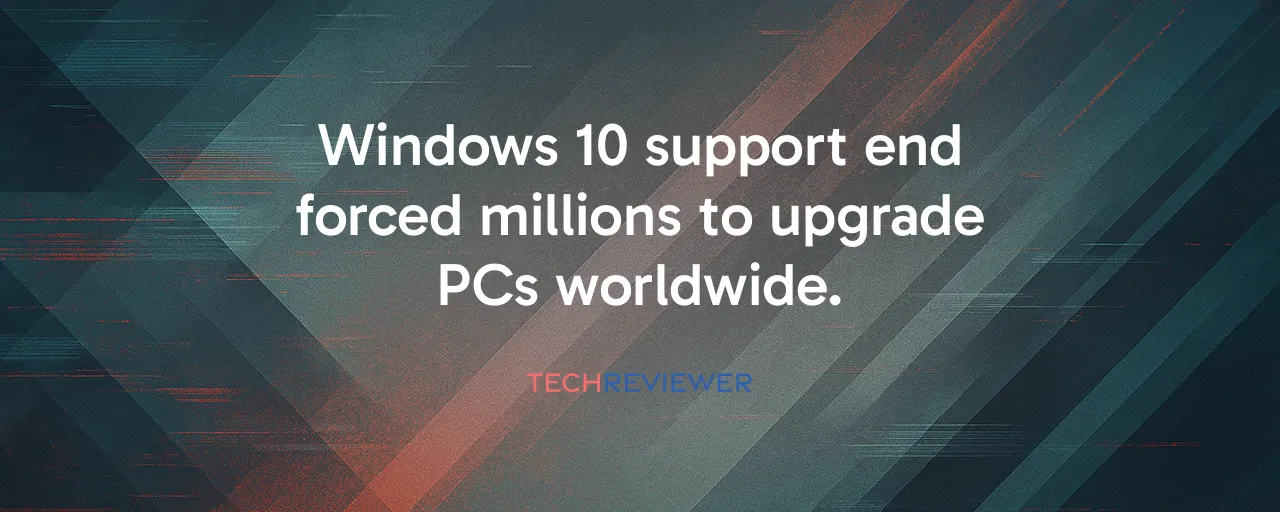A Deadline That Changed Everything
October 14, 2025 marks a turning point for millions of PC users. Microsoft's decision to end support for Windows 10 pushed businesses, schools, and everyday users into hardware upgrades. According to IDC, global PC shipments soared 9.4% in the third quarter of 2025, hitting 75.8 million units. The reasons include aging laptops from the pandemic era, struggling batteries, and a hard deadline for security updates. This upgrade wave focuses on survival in a world where unpatched systems invite hackers.
The surge exceeded expectations. Analysts predicted modest growth of around 4% for the year, but the third quarter's numbers surpassed projections. From corporate offices in Japan to school districts in Asia, buyers scrambled to replace devices before they became vulnerable. Lenovo held its lead with a 25.5% market share, while HP and Dell followed at 19.8% and 13.3%. Apple and ASUS saw double-digit growth, capitalizing on demand for premium machines meeting Windows 11's strict requirements.
Why Upgrades Became Non-Negotiable
Windows 11 demands more than its predecessor. Running it requires a TPM 2.0 security chip, UEFI firmware with Secure Boot, and at least 4GB of RAM, though 8GB is optimal. These represent the minimum to keep systems secure after Windows 10 stops receiving patches. For the 400 million users still running Windows 10, accounting for 41% of all PC users worldwide, the options are limited: upgrade hardware, pay for Microsoft's Extended Security Updates, or risk cyberattacks.
Cybersecurity experts warn that unpatched systems become prime targets for malware once support ends. Historical data confirms this, with Windows 7 experiencing a spike in exploits after its 2020 cutoff. Businesses face tougher decisions. Many devices purchased between 2017 and 2019 remain powerful for daily tasks but lack required chips. IT managers balance replacing entire fleets at costs of $500 to $1,200 per device against paying $61 per device annually for security updates that double in price each year.
Case Study: Schools and Hospitals Feel the Pinch
A school district in Ohio used federal funding to replace classroom PCs before the deadline. The district swapped out 5,000 aging devices to meet Windows 11's requirements, ensuring students access secure, modern systems. This mirrors trends in Asia, where education-driven purchases fueled much of the 9.4% shipment growth. Schools gain updated hardware, but the cost diverts funds from teaching staff or programs.
Hospitals encounter greater complexity. A Midwest healthcare network discovered that critical diagnostic equipment relied on software incompatible with Windows 11. With no vendor updates available, they enrolled in Microsoft's Extended Security Updates, spending thousands to keep systems secure while planning a phased hardware transition. These cases demonstrate that the upgrade wave involves navigating budgets, compatibility, and mission-critical needs under pressure.
The Rise of AI PCs and New Possibilities
Amid the chaos, a new breed of PCs emerges. Copilot Plus PCs, equipped with neural processing units handling over 40 trillion operations per second, redefine laptop capabilities. These machines power features like real-time language translation, semantic search, and automatic video framing, using less battery than traditional processors. In 2024, nearly 50 million AI PCs shipped, and analysts predict over 100 million in 2025, comprising 40% of the market.
Users experience tangible benefits. Searching for a document by describing it in plain English or having video calls automatically adjust framing are real features on devices from Lenovo, HP, and ASUS. However, these AI capabilities require premium hardware, leaving budget-conscious users with standard Windows 11. The split between basic and AI-powered PCs risks creating a tiered experience, where only those affording top-tier machines gain full benefits.
The Hidden Cost of Progress
The upgrade rush carries downsides. Replacing millions of functional PCs generates a mountain of electronic waste. Devices containing rare earth elements, copper, and gold often end in landfills, especially in regions with weak recycling systems. Developing nations and low-income communities feel the squeeze most, as new hardware costs align with wealthier markets' realities. Schools and nonprofits struggle to keep up, potentially widening the digital divide.
Supply chain issues compound problems. U.S. tariffs, including a 50% charge on copper imports and 15-25% on electronics from Japan and South Korea, have increased North American prices. HP shifted manufacturing to India and Mexico to avoid tariffs, but the transition faced challenges. Higher costs and supply constraints dampen demand, particularly for small businesses already stretched thin. Forced upgrades, while necessary for security, impose trade-offs hitting hardest at the margins.
Balancing Security, Cost, and Sustainability
The Windows 10 deadline highlights competing priorities: security demands, cost constraints, and sustainability concerns. PC manufacturers profit, with market revenue projected to reach $222.64 billion in 2025. Users confront difficult choices. Small business owners, like a California bakery chain, report delaying upgrades due to cost, accepting security risks. Privacy advocates question features like Windows 11's Recall, which stores on-screen content, raising data exposure concerns.
Solutions exist. Refurbishment programs could extend older PCs' life in markets less dependent on Windows 11. Partnerships between manufacturers and recyclers might ease e-waste burdens. Currently, the PC market rides a wave of necessity. As AI PCs become mainstream, future upgrades may blend security with compelling features. The challenge remains ensuring no one gets left behind.
